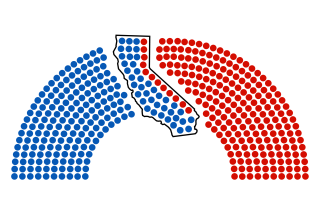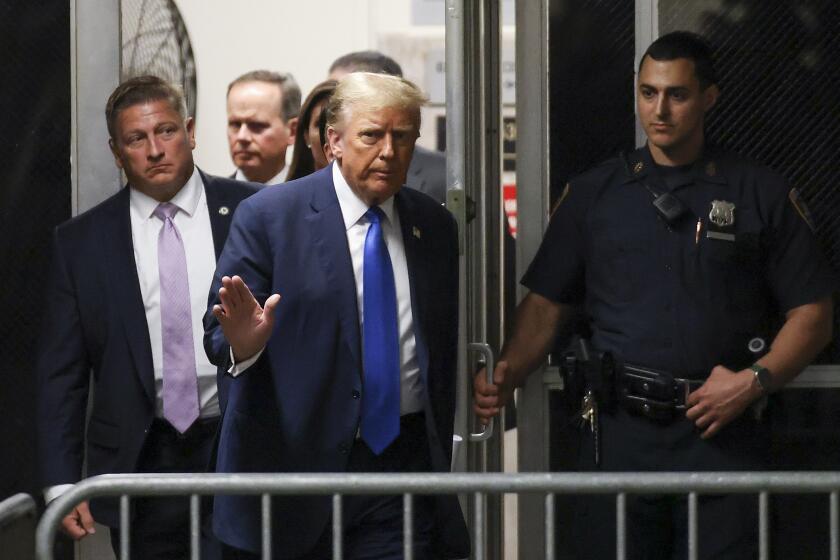Think California’s too big and influential? Wait until the presidential race heats up
One by one, the Democratic presidential candidates campaigning in Iowa show their fealty to ethanol, the corn-based fuel that supports about 42,000 jobs and buoys the state’s crucial agriculture economy.
That is the raw power that Iowa, which holds the first test of the 2020 presidential election, possesses in American politics. At least for a while. By the morning after the Feb. 3 caucuses, the contenders may never mention the commodity again.
Many years ago, the late historian Kevin Starr said that modern California was “an ecumenical experiment conducted on an unprecedented level.”
Now the product of that experiment — carried out over centuries by missionaries and miners, dreamers and the down-and-out, producers of airliners, iPhones and Hollywood films — has the real potential of dominating one of the most important elections of modern times.
For it is the trademark issues and values of California — immigration, healthcare, trade and the environment — that to a large extent will drive this presidential contest.
The notion of a national race being a referendum on one state’s values — or, in another conception, a struggle between the worldview of California and the worldview of President Trump — could only emerge in a political environment where urgent economic and foreign policy issues won’t dominate as they ordinarily do.
To the extent that economic issues are in play, they are poverty, globalization and income inequality, all central to the California zeitgeist.
“These are the topics where California conflicts the most with Trump,’’ said Bill Carrick, a veteran Los Angeles-based Democratic strategist. “We are as far out of touch with this president as we have ever been with any president. It’s striking and it’s all over California and over all the issues.’’
An early March 3 primary and the presence of California candidates, including Sen. Kamala Harris and Bay Area Rep. Eric Swalwell, among the nearly two dozen Democratic contenders, only serves to heighten the California orientation of the 2020 election.
Or as Mark Baldassare, the president of the nonprofit Public Policy Institute of California, put it, “The issues that are front and center in California are the very ones the country will be forced to confront in the next four or five years.’’
::
For decades, California has been where the American future first came into focus, thanks to visionaries who peered beyond the present. The pioneers of the film, aerospace and high-tech industries, yes. But also political leaders like the liberals Hiram Johnson and Upton Sinclair, and the conservatives Arthur Laffer and Ronald Reagan.
Those ideological fault lines persist — dominant on the left but not dormant on the right — in a California that, more than ever, seems a world of its own.
The state boasts the world’s fifth-largest economy. The population of 40 million exceeds that of Canada. California’s 55 electoral votes alone are more than a fifth of the total required to win the White House, dwarfing the swing states of Michigan, Wisconsin and Pennsylvania as well as the perennial battlegrounds of Florida and Ohio.
Today, the state is big and powerful enough to pursue its own economic and foreign policies.
A key issue setting California apart, and setting a standard for the rest of the country, is climate change. The state has pledged to reduce greenhouse-gas emissions to 40% below 1990 levels in fewer than a dozen years while dramatically increasing renewable energy and reducing the reliance on fossil fuels.
“We are committed as first-movers,” said Bruce Cain, a Stanford political scientist and longtime student of California. “We are willing here to be ahead and to staying ahead, and it is a reflection of our high-tech industries and of the reality that drought, fires and flooding have shown us the consequences of climate change.”
The release of Los Angeles Mayor Eric Garcetti’s Green New Deal, with its zero-emissions transportation network and the elimination of plastic straws and single-use take-out food receptacles, echoes previous pioneering initiatives. It signaled the primacy of environmental issues in a state that, in 1882, ended hydraulic mining operations after Central Valley farmers complained of the damaging debris — a decision regarded as a landmark in American environmental history.
“Very early on, Californians realized getting the environment right involved balancing the needs and interests of a lot of people,’’ said David Festa, senior vice president for ecosystems for the California chapter of the Environmental Defense Fund.
That process — weighing the competing interests of economic growth and environmental protection — has always been a challenge, often taken up first in California and then the rest of the country. Few sectors are as sensitive to that tension as the state’s farm economy, which accounts for more agricultural production — above $50 billion — than any other American state.
More than a third of the nation’s vegetables and two-thirds of the country’s fruits and nuts are produced in this state, with exports drawing almost $21 billion. This is an area where the Trump tariffs have hit particularly hard; almond exports to China, which primarily uses the nut for skin-beauty products, are down more than 30%.
“This is a big California issue,’’ said Jamie Johansson, a Northern California olive farmer who heads the California Farm Bureau Federation. “These tariffs have had a terrible effect, particularly for citrus and cherries. For certain this will be an issue in the election.’’
So will immigration, which has dominated California politics off and on since well before the Gold Rush and the construction of the transcontinental railroad. Today, immigrants account for more than a third of the state’s civilian, non-government workforce; more than two-thirds of its agricultural workers; four-fifths of its housekeepers and nine-tenths of its sewing-machine operators.
“It is not a theoretical issue in this state,” said Victor Narro, a professor in the labor and workplace studies program at UCLA. “It is a real social and cultural issue that goes to the heart of what the state is — and what the country will be.’’
As Trump continues to advocate the repeal of the Affordable Care Act, healthcare remains an important political issue in California, which under Obamacare cut the rate of the uninsured more than half, from 17% to 7% — more than any other state.
“Whatever the label is, Obamacare is generally supported and affirmed here,’’ said Peter Lee, executive director of Covered California, the health insurance marketplace for the state.
The majority of California voters are more likely to support an expansion of Obamacare than its replacement. “This is a very blue state filled with Democrats and minorities for whom health is a top issue,” said Drew Altman, president of the San Francisco-based Kaiser Family Foundation, which studies healthcare-related issues.
The Trump tax bill also will get substantial attention, especially in California, where taxpayers this spring unhappily discovered one of the bill’s major features, the $10,000 federal cap imposed on the deduction of state and local taxes. The average state and local tax burden in California is $18,438, according to a Pew Foundation study, making the impact particularly onerous.
“This seemed to us to be done out of sheer meanness,’’ said Carrick, the Democratic consultant.
::
Another notable part of the 2020 political calculus is the increased role California could play in selecting Trump’s opponent. This is a direct result of moving the California primary from June, at the end of the primary season, to March 3, after the four lead states of Iowa, New Hampshire, Nevada and South Carolina vote.
Of course, not all hold California and its brand of left-coast liberalism in particularly high regard.
The influence of the state — by virtue of its size, its position on the primary calendar and perhaps if the eventual nominee or vice presidential candidate is a Californian — could prove worrisome for Democrats if it’s seen as moving the party too far left.
“The Democrats are in the middle of an argument about who they are, and one of the options is to be a California party with California views,’’ said Dennis Goldford, a political scientist at Drake University in Des Moines.
“All the themes that work for a large portion of Democrats are themes that really resonate in California,” Goldford continued. “But they have to be careful, because in being a California party they risk alienating the Midwestern voters they didn’t get last time.’’
Thad Kousser, who teaches political science at UC San Diego, agreed.
“If the Democrats view this election as a choice between California and Donald Trump, they risk winning only states like California,” Kousser said, “and winning states like California isn’t enough as long as we still have an electoral college.”
Shribman is a special correspondent.
\
More to Read
Get the L.A. Times Politics newsletter
Deeply reported insights into legislation, politics and policy from Sacramento, Washington and beyond. In your inbox three times per week.
You may occasionally receive promotional content from the Los Angeles Times.






